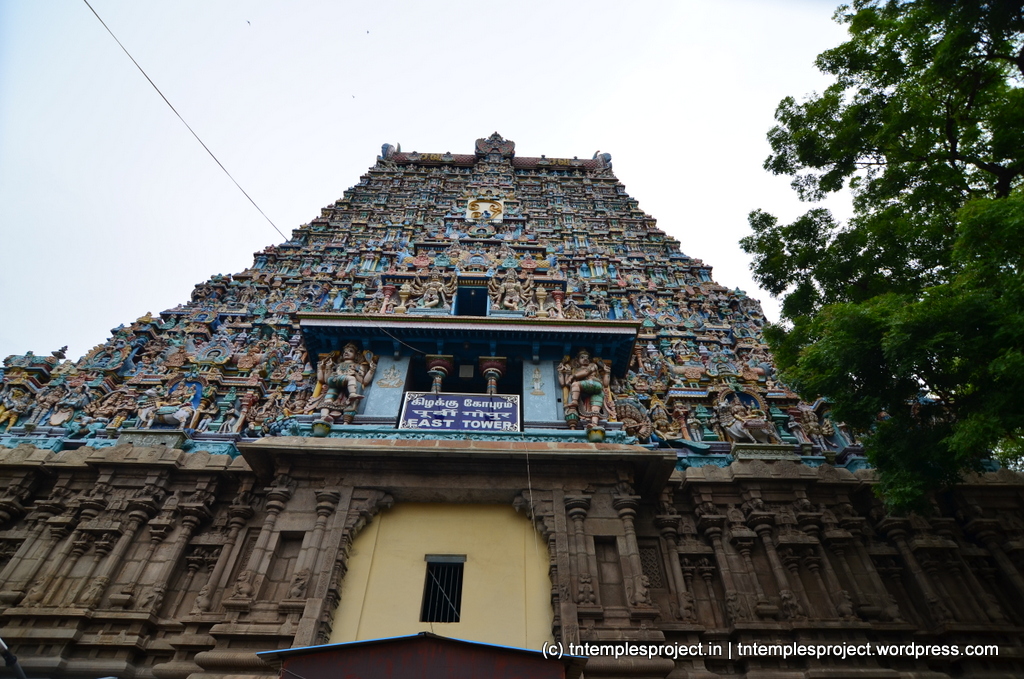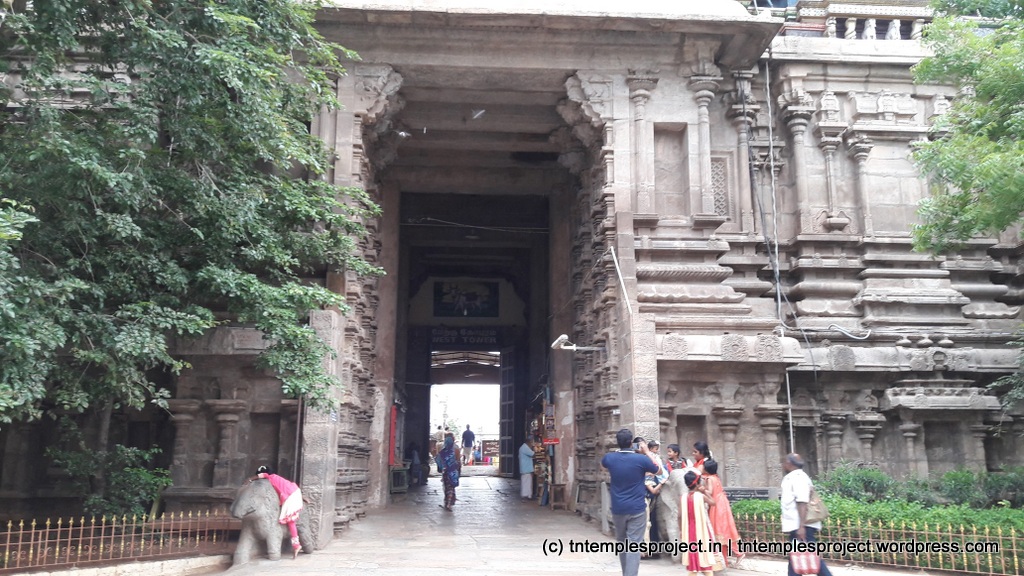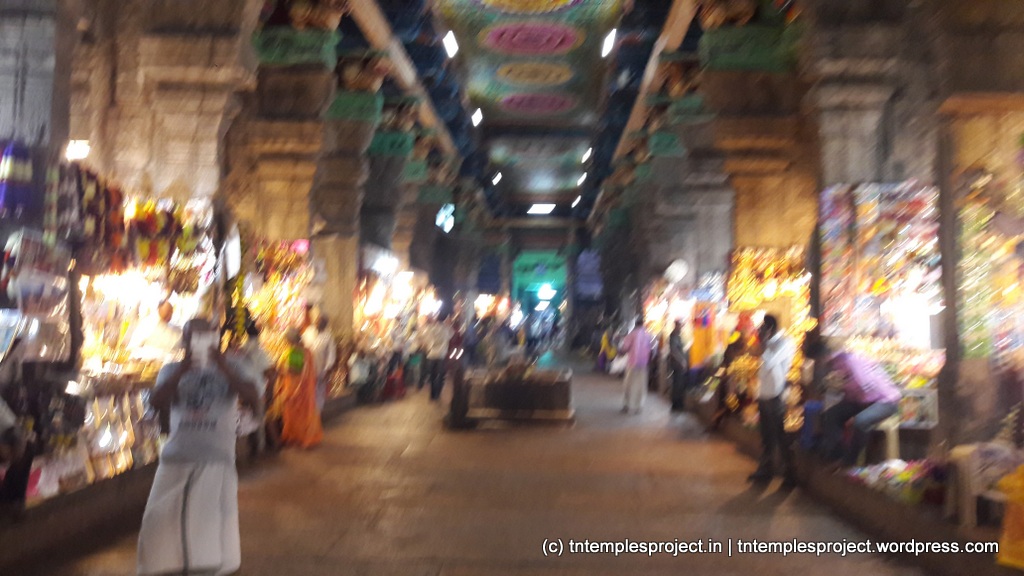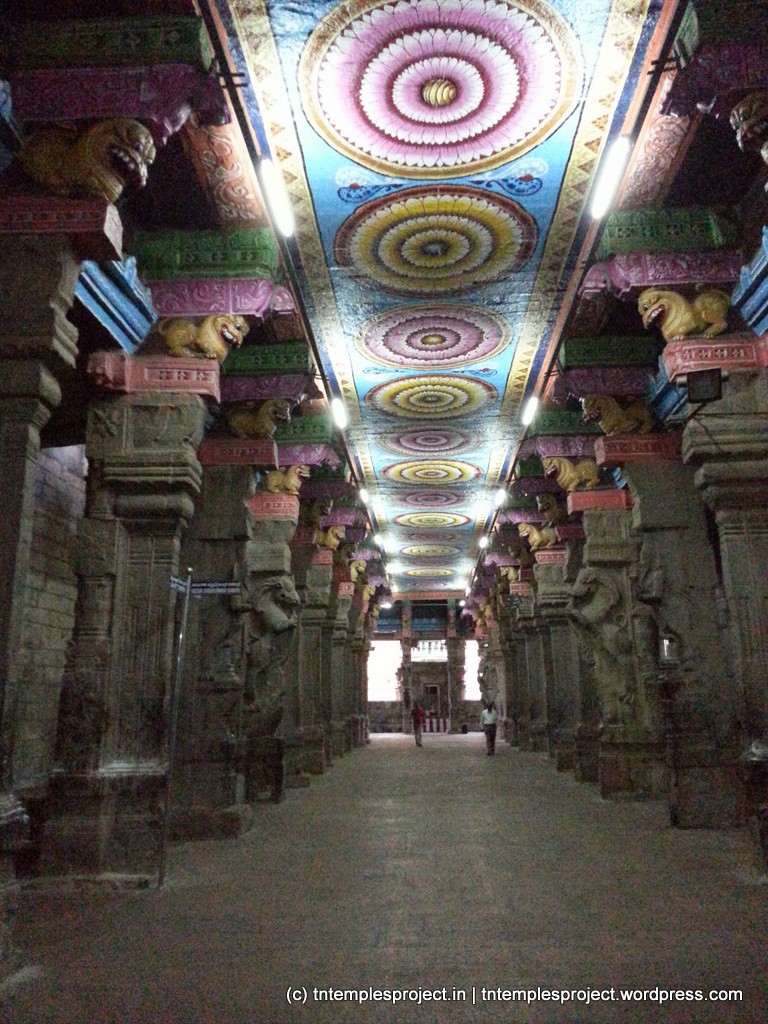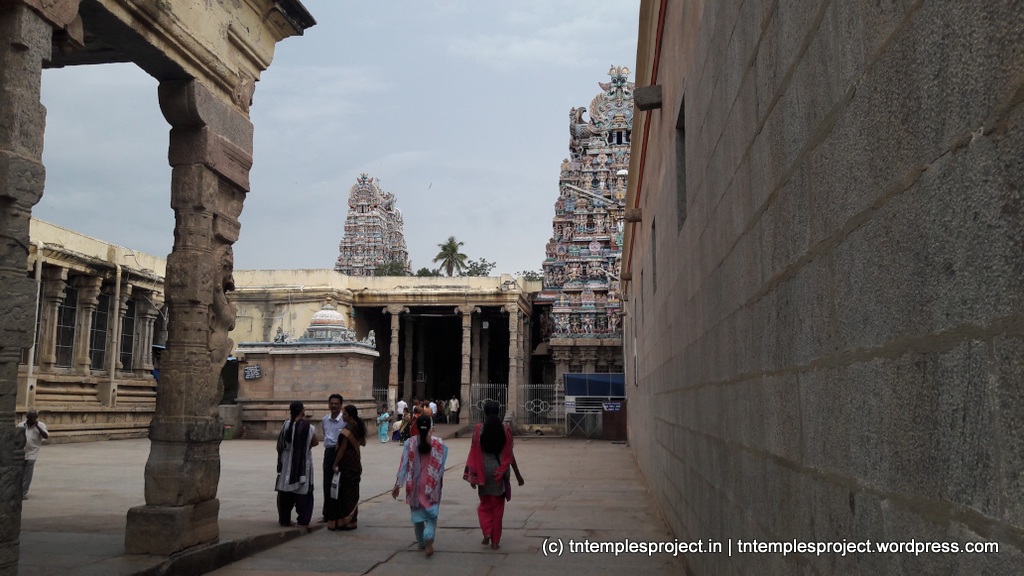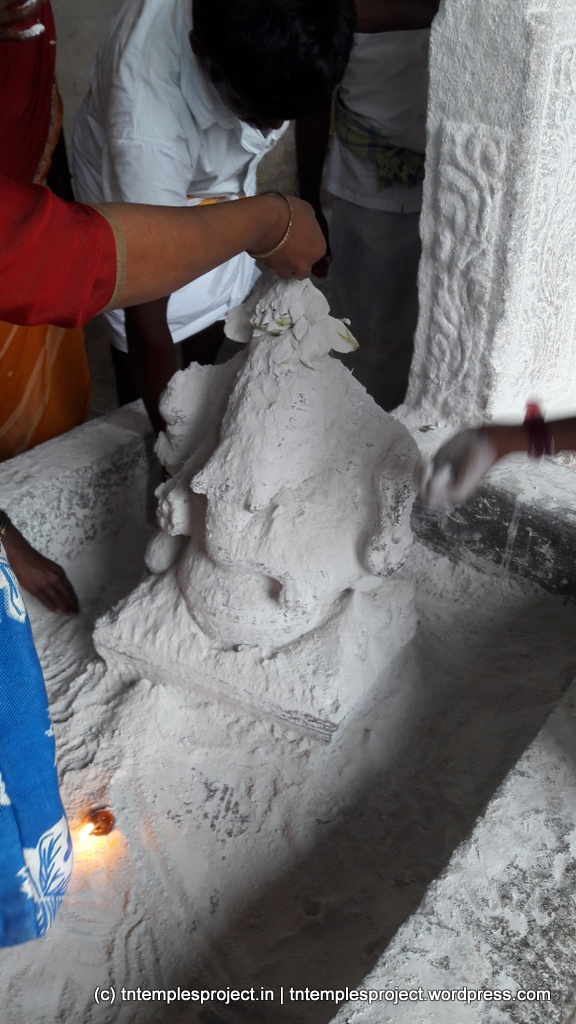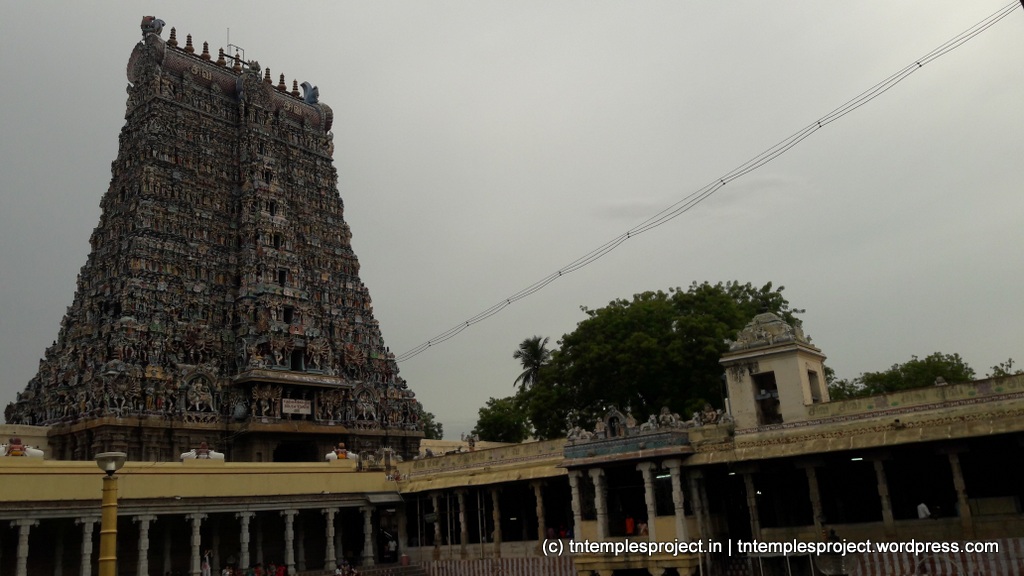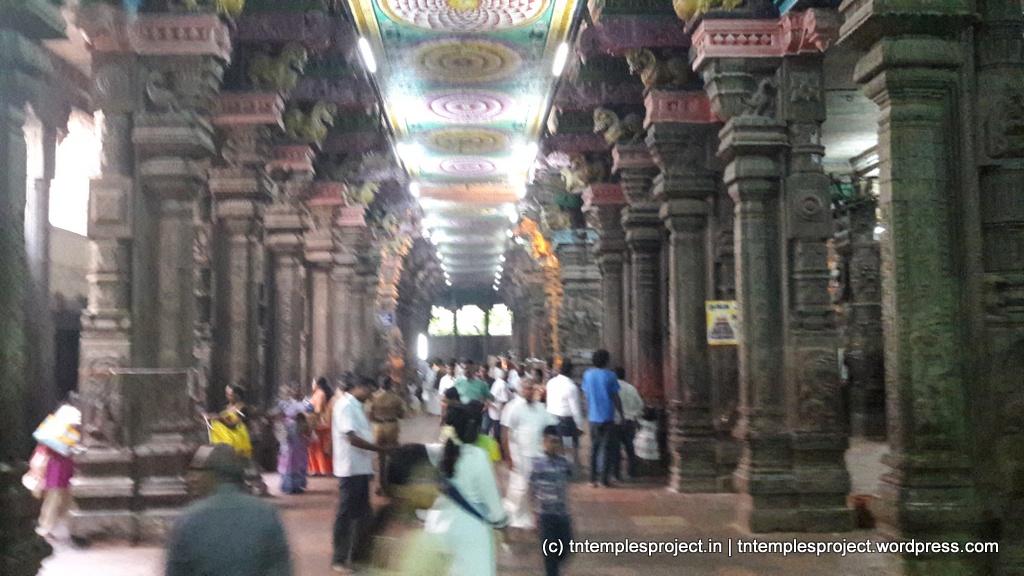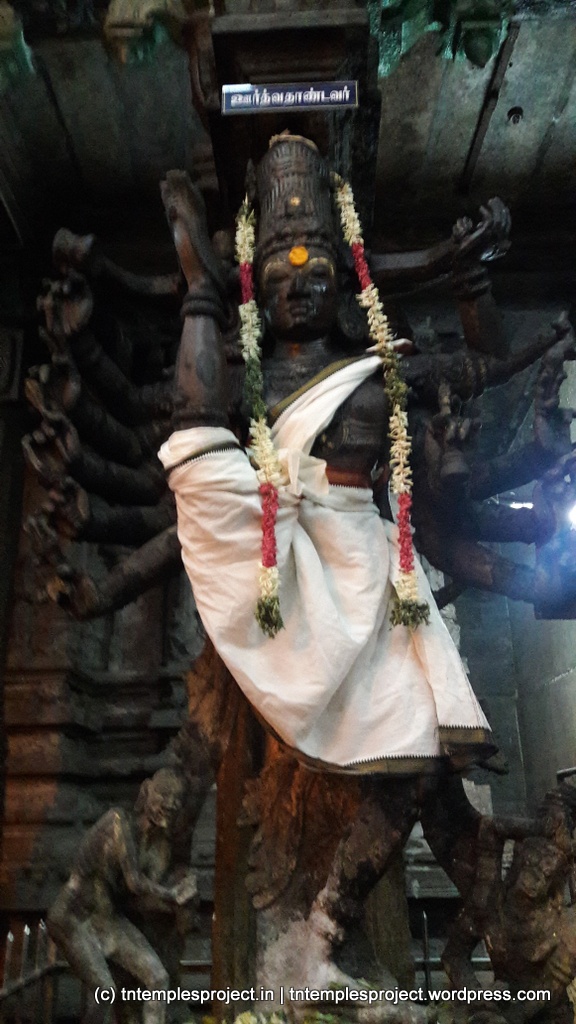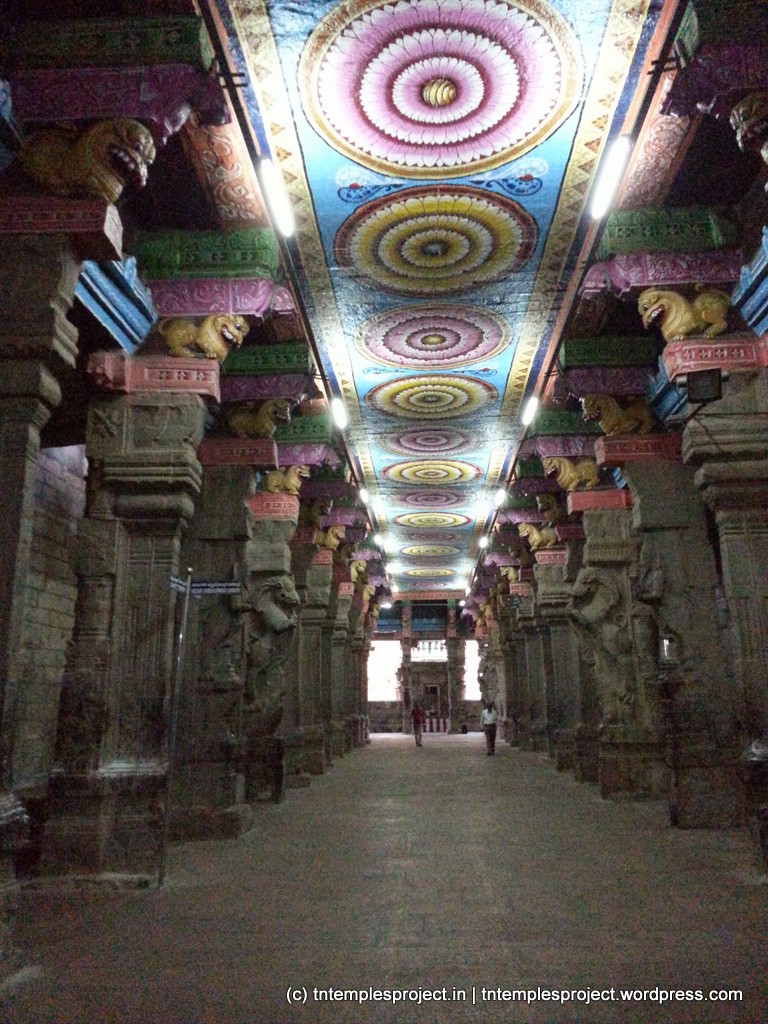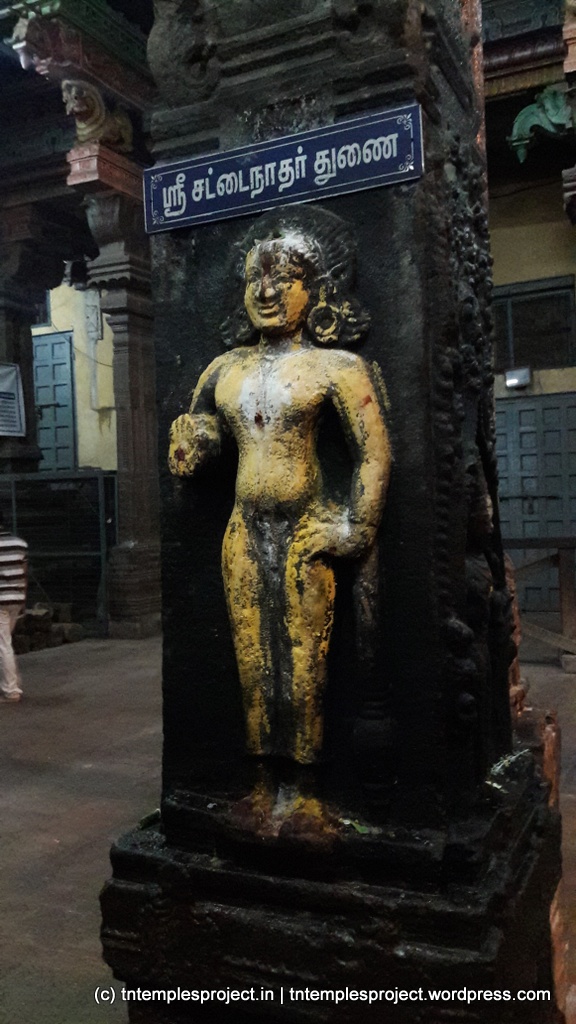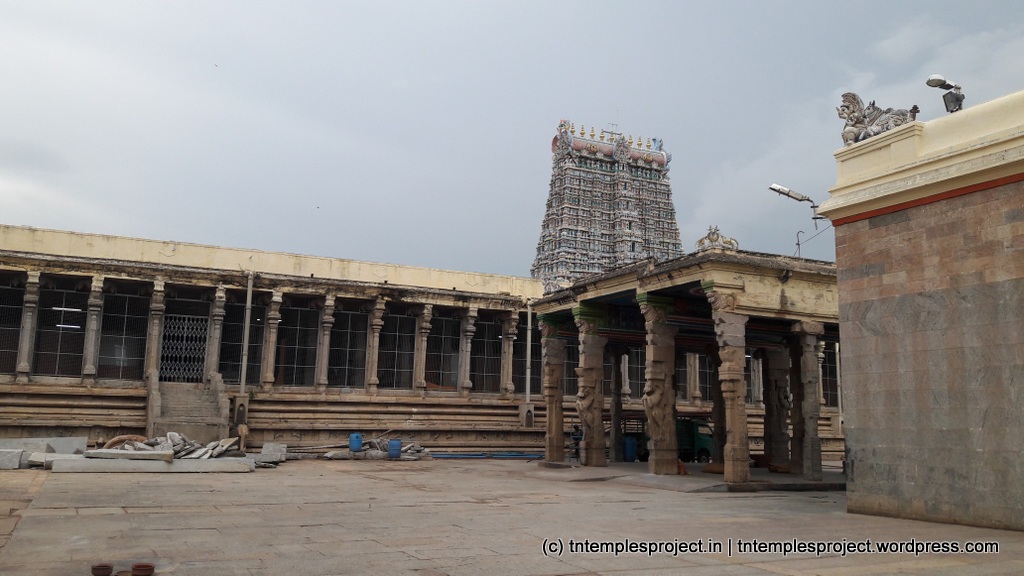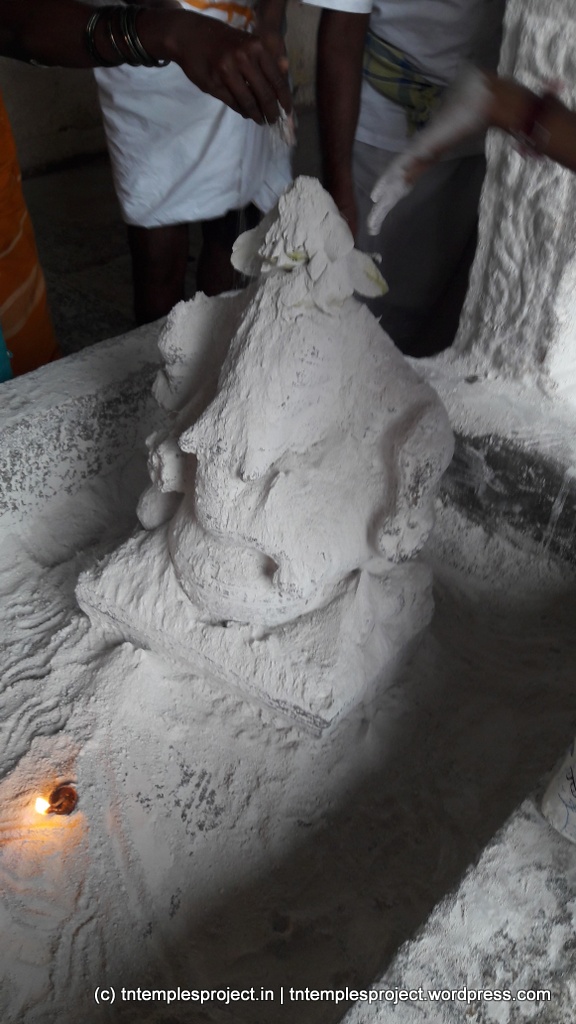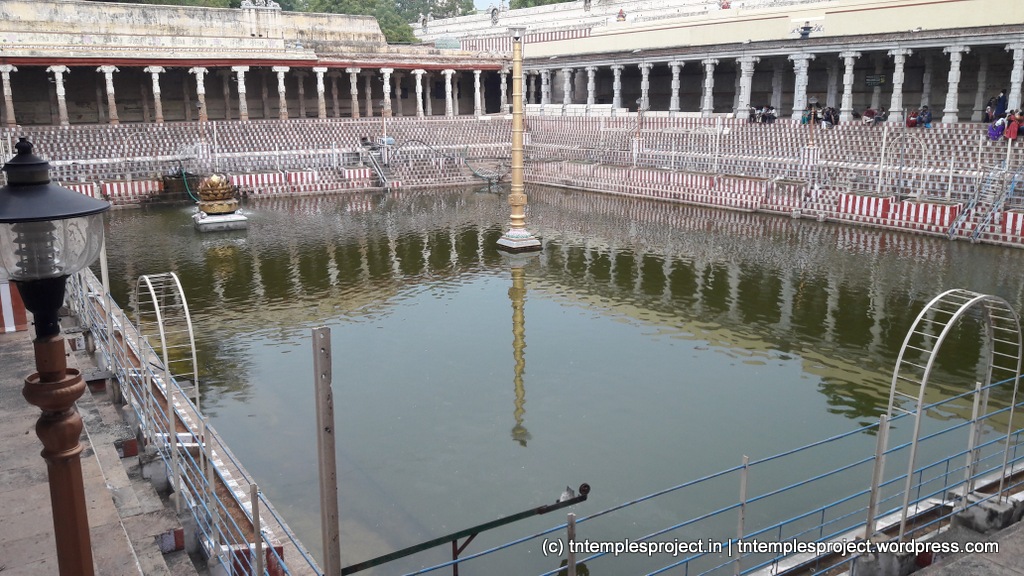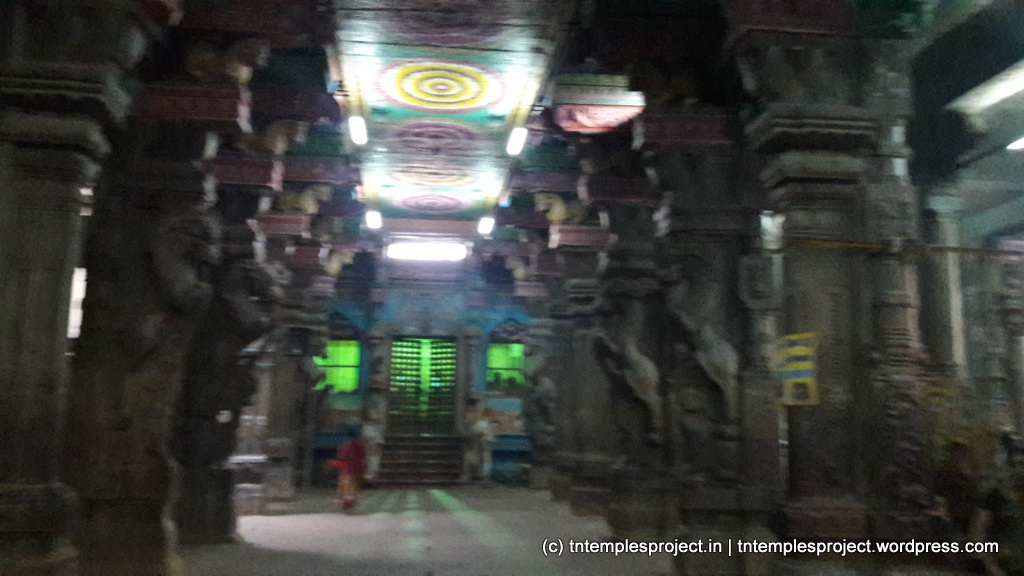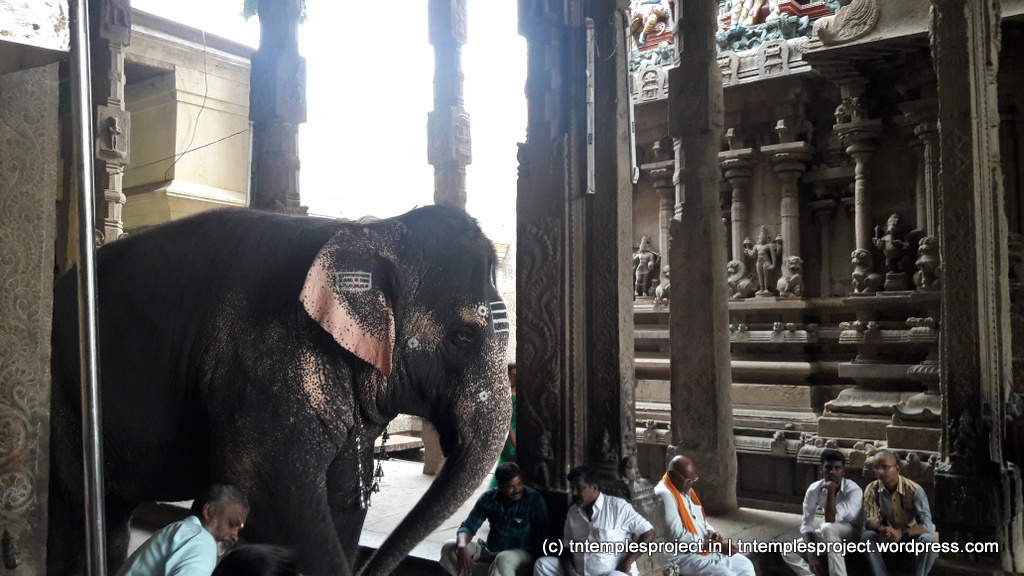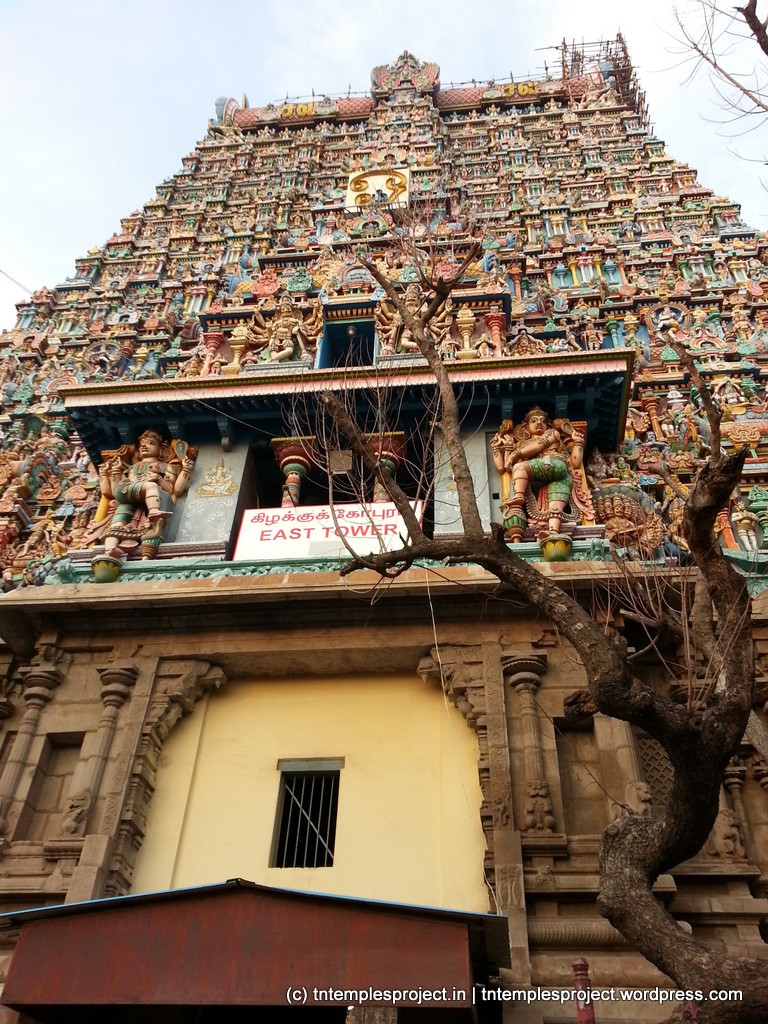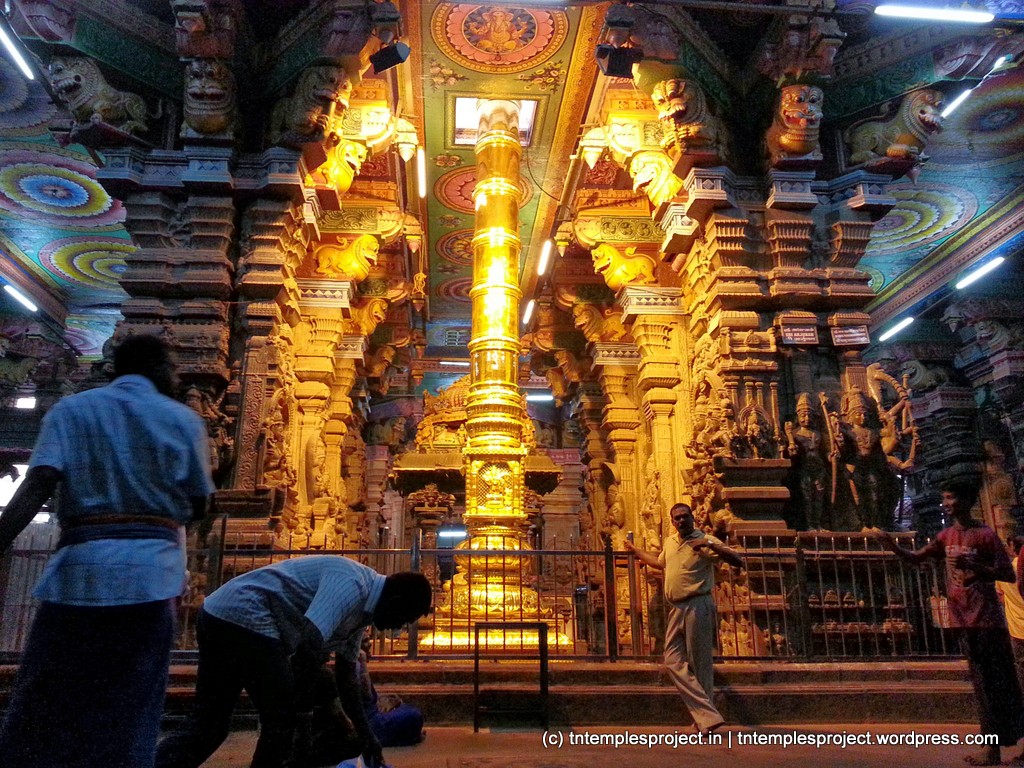Basic information about the temple
| Moolavar: | Sundareswarar | Ambal / Thayar: | Meenakshi, AngayarkaNNi |
| Deity: | Siva | Historical name: | Tiruaalavaai |
| Vriksham: | KaDamba Maram | Teertham: | Ponthamarai Kulam |
| Agamam: | Age (years): | Timing: | to & to | Parikaram: |
| Temple group: | Paadal Petra Sthalam (Pandya Nadu) | – | |
| Sung by: | Temple set: | ||
| Navagraham: | Nakshatram: | ||
| City / town: | Madurai | District: | Madurai |
| Maps from (click): | Current location | Madurai (1 km) | Sivaganga (9 km) |
| Virudhunagar (51 km) | Dindigul (62 km) |
Location
Sthala puranam and temple information
Popularly known as the Madurai Meenakshi temple, this is one of Tamil Nadu’s best known temples / landmarks. It is one of the pancha sabhai temples (Velli sabhai), and is said to be symbolic of the preservation (stithi) function of the Supreme. It is also one of the 51 Sakti Peethams.
The story of this temple is virtually the story of Madurai itself. The puranams and aspects related to this temple are several, and almost endless, so we will take a look at some important ones.

Malayadhwajan, the Pandya king, did not have children. He performed a yagam, and from the sacrificial fire, begot a girl child already aged three years, having three breasts. He named her Tataatakai (the one with eyes like a fish), and she was therefore also called Meenakshi. A celestial voice at the sacrifice indicated that the third breast would fall off when she met her husband-to-be. Meenakshi became a warrior, and eventually went to the Himalayas and was able to defeat several of the Devas. They rushed to Lord Siva to seek His protection. When Siva appeared on the battlefield, Meenakshi’s third breast disappeared, and She knew she had met her future husband. Siva also knew this, and asked her to go back to Madurai, promising to be there in eight days. Siva duly arrived at Madurai on the 8th day, resplendent and handsome in his form as Sundareswarar (the handsome one) and married Meenakshi.
This is the chief puranam of the temple. Madurai is where Siva transformed from an ascetic to a householder, and therefore gets prominence in the culture of south India and Tamilakam. This puranam is also associated with the Kallazhagar (Sundararaja Perumal) temple at Alagar hills just outside Madurai, and certain customs of that temple.
Indra once killed a demon who was performing penance, as a result of which he could not find peace in his own land. He came down to Bhulokam, and felt the burden of his sin leaving him, as he passed through a forest of kadamba trees in what later became the Pandya kingdom. He approached some devotees who told him that this was due to the grace of Siva, present as a Lingam under one of the kadamba trees. Indra immediately located the Lingam, and built a small temple around it. This is believed to be the Lingam in Sundareswarar’s garbhagriham in the temple, even today. This is also the reason the temple’s vimanam is called the Indra Vimanam.
Dhananjaya, a merchant, was traveling from Kumari Kandam (Lemuria, which is said to have existed eons ago), and spent the night in the Kadamba forest. In the morning, he saw signs of worship, and assuming it to be the work of the celestials, informed the king Kulasekhara about it (at the time, the place was ruled by the early Pandyas). In the meantime, Siva had appeared to the king in a dream, and instructed him to build a temple. The king took the merchant’s information as a sign of confirmation, and built the earliest temple here.
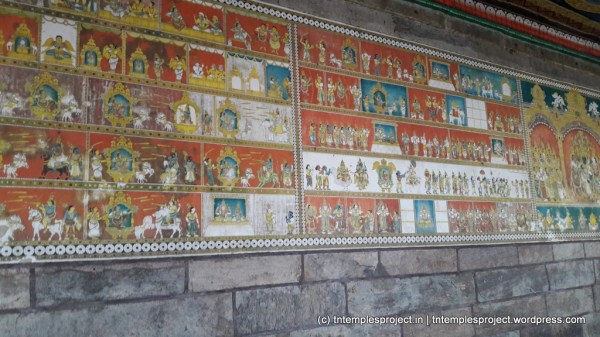
Though a Siva temple, this place is often called the Meenakshi Amman temple, due to Her being considered as the protecting deity of the locals, and because of the primary puranam of this temple. Meenakshi Amman is seen holding a parrot, which is said to keep reminding Her of the requests of Her devotees. Amman’s murti is made of emerald, and She gets first worship at the temple every day. Theologically and culturally, this temple gives importance to the concept of the feminine – the sumangali (auspicious woman) who lives with her husband but is also independent (ref: Prof. Christopher Fuller).
The popularity of Amman here is said to be a counter to Chidambaram, where, despite having a large shrine for Sivakami Amman (as well as a separate temple for Thillai Kali), it is revered as a Siva temple almost exclusively.
While Siva as Sundareswarar is represented by the Lingam, there are two other representations of Siva at the temple. One is of Sokkar (or Sokkanathar – the divine one, or the handsome one), represented by a pair of feet embossed on a metal stool-like platform. This representation is what is taken to the Palliyarai every night. The other is of Siva performing His Tandavam, with his right foot raised and left foot on the ground – representing the Velli Sabhai.
Madurai is named for Mathura in the north, by those who migrated from there and wanted to give their city a name that reminded them of their past (in fact, in some references, the place is called Madura or Madurapuri). Madurai is often referred to as Aalavaai (in fact, the temple itself is sometimes called Aalavaai).
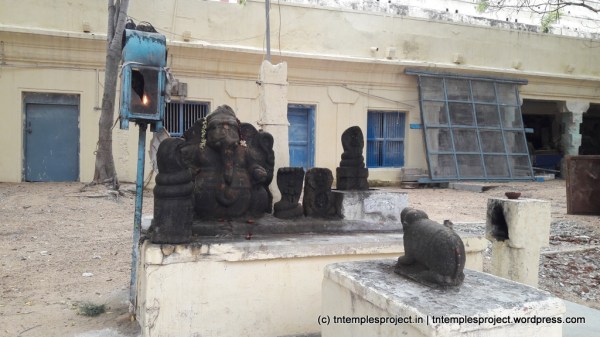
The etymology of this is from the belief that the city was once guarded by a huge poisonous serpent (aalai), and the entrance to the city was where the serpent’s mouth (vaai) was. In Sangam texts (some of which date back to almost the 1st century BCE), the city is referred to also as Koodal, indicating the gathering (koodal, in Tamil) of poets at the early Tamil Sangam (which also explains why the Perumal in the temple in the city centre is called the Koodal Azhagar).
The place is also called Kadamba vanam in inscriptions and historical texts, referring to this being a forest of Kadamba trees; and also Velli-Ambalam (referring to the Velli Sabhai) where Siva danced His Sandhya Tandavam.
The interesting thing about Siva’s tandavam depiction at Madurai, is that very uniquely, He is seen with His left foot on the ground and right foot raised. Once, Rajasekara Pandyan – the then ruler – had learnt 63 of the 64 arts (ayar-kalai), and wanted to attain proficiency in dance (Natyam). However, he found this to be very difficult, and wondered how Siva could stand on the same foot (His right foot) for eons together. So the king requested Siva to rest a bit, and suggested that He put His left foot on the ground instead.
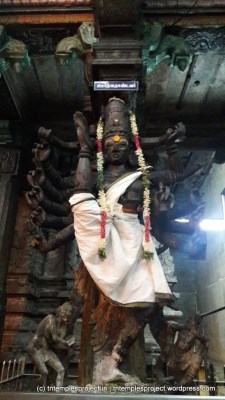
Madurai and its surroundings are the site of the 64 Tiruvilaiyadals – the plays of Siva – where He tests devotees or helps them overcome hurdles.
The Tiruvilaiyadal puranam, authored by Paranjothi Munivar, is divided into three sections – Madura, Aalavaai and Koodal – reflecting the various names of the city. Madurai itself is the location of several of the Tiruvilaiyadals, including the confrontation between the poet Dharmi and the Nakkeerar; Siva carrying sand in exchange for pittu as his wages; and Banapathirar’s singing exploits.
The temple is also associated with several Nayanmars. Koon Pandyan (or Kubja Pandyan) had a disease which was cured by Sambandar (the Mandiramaavadu Neeru pathigam is on the Meenakshi-Sundareswarar temple, and exalts the curative powers of vibhuti – the sacred ash), who later defeated the Jains (this is also connected with the sthala puranam of the Edaganathar temple just outside Madurai). Koon Pandyan himself reconverted to Saivism and later came to be known as Sundara Pandyan (or Nindra Seer Nedumaran). His queen Mangayarkarasi (one of only two women Nayanmars) and his minister Kulachirai are two of the other 63 Nayanmars. Madurai is also the avatara sthalam of Murti Nayanar. Madurai was the capital of Varaguna Varman II, the king under whom Tiruvathavooraan was a minister, and later became Manikkavasagar.
Syama Sastri – part of the Carnatic music trinity – composed a set of 9 songs in Telugu – called the Navaratna Malika – in praise of Meenakshi Amman. It is believed that when he sang these at the Amman shrine, Meenakshi Amman responded visibly.
The core structural temple is largely Pandya, dating back to the 11th and 12th century (mostly the latter, relating to the time of Kulasekara Pandyan). Individual gopurams were built later, including by Maravarman Sundara Pandyan I in the early 13th century, and by Maravarman Sundara Pandyan II in the latter part of the 13th century (who also built the pillared corridor to the Sundareswarar shrine).
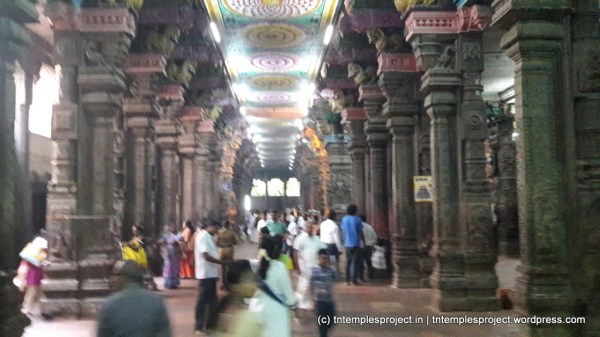
However, the temple and the city were attacked by the Islamic invasion by Malik Kafur’s troops in the early 14th century, resulting in the loss of several pieces of art and architecture, as well as inscriptions. After this, the temple was brought out of its ruin-state by the Vijayanagara Dynasty, till about the 16th century. Thereafter, the Nayaks took over, and redesigned much of the temple as per agamas and Shilpa shastras, and even undertook a redesign of the entire city in the form of concentric squares centred around the temple. Today, the temple features a profusion of art, design and architectural elements across its vast premises. The temple also features several separate mandapams, built at various times, each with its own architecture and purpose.
Interestingly, despite being Madurai having been under Chola rule for at least 2 centuries, there is not a single inscription referring to their contributions to the temple. That they would have not made any contribution, is highly unlikely. This view also seems to be supported by inscriptions at the Shikhanathar temple at Kudumiyanmalai. One may conclude that these inscriptions did exist in the Madurai temple, but were destroyed during the Islamic invasion.
Even today, one can see the streets around the temple are named after Tamil months. These were, at one time, part of the entire temple premises (as was/is the case with Srirangam and Darasuram). It also used to be, that in each of those months, residents of the respective streets took turns to take the temple bronzes (utsava murtis) in procession around the city.
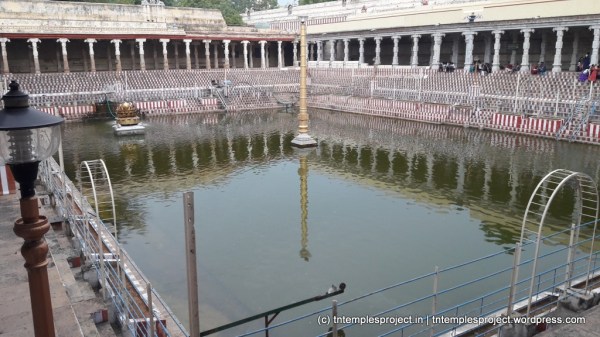
The temple’s chief tank – the Porthamarai Kulam – is located inside the temple premises, and is said to have been created by Siva with His trident, at the request of the sages. In Sangam times, this tank is said to have the power to judge the quality of literature submitted to it (though some accounts state that this was the Sanga Palagai, which was a sitting platform that expanded to accommodate deserving scholars based on the quality of their work).
The annual Meenakshi Tirukkalyanam festival is the most prominent of festivals in this temple, attended by hundreds of thousands of devotees every year.
The temple is said to be like a crown jewel, surrounded by an inner ring (Ull-Aavaranam) and outer ring (Veli-Aavaranam) of temples, representing jewels. The Ull-aavaranam temples are: Adi Sokkanathar temple, Immayil Nanmai Tharuvar temple, Mukteeswarar temple, and the Then Tiruaalavaai temple. The Veli-Aavaranam temples are the Satya Gireeswarar temple at Tiruparankundram, Edaganathar temple at Tiruvedagam, Tiru Aapudaiyar temple at Sellur (Tiruvappanoor) and Pushpavaneswarar temple at Tirupuvanam.
The temple is also connected to the Ramayanam and Mahabharatam. Rama and Lakshmana are said to have worshipped at this temple, while the Mahabharatam has several references to Madurai (including the Pandya kings’ participation in Draupadi’s swayamvaram and in the Kurukshetra war).
Other information for your visit
Popular belief is that the Tamil Nadu government’s emblem is based on the eastern gopuram of the Srivilliputhur Vatapatrasayi temple. However, it is actually based on the western gopuram of the Madurai Meenakshi-Sundareswarar temple.
Contact
Gallery
